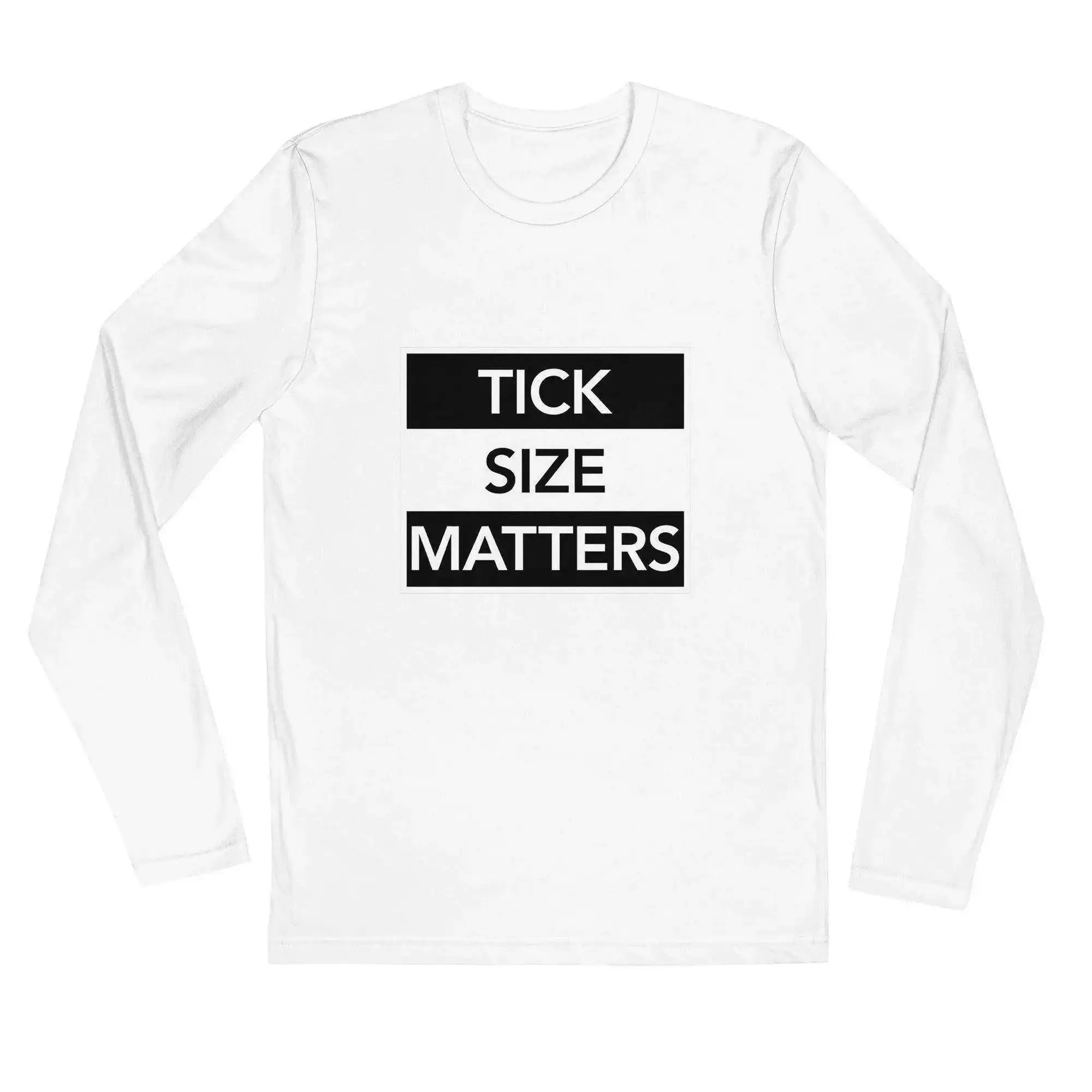
Futures Trading: Understanding the Tick & Point Values
Futures trading may sound intimidating at first, but at its core, it is simply a way to buy or sell something at a predetermined price on a future date. Unlike traditional investing, which focuses on owning stocks or bonds, futures are all about agreements. Whether you’re looking at commodities like oil and wheat, or financial products like the S&P 500 index, futures give traders and businesses a way to manage risk, speculate, and lock in prices ahead of time.
Key Components of a Futures Contract
Futures contracts are standardized agreements, which means they follow a specific structure. To trade them effectively, you need to understand the components that make up each contract.
Underlying Asset
The underlying asset is the item being traded. It could be a physical commodity such as gold, wheat, or crude oil, or it could be a financial instrument like the S&P 500 index or Treasury bonds.
Expiration Date
Every futures contract has a set expiration date, which is when the agreement must be settled. Traders can either close their positions before expiration or hold them until the contract expires.
Contract Size
The size of the contract determines how much of the underlying asset you’re trading. For example, one crude oil futures contract on the CME (Chicago Mercantile Exchange) represents 1,000 barrels of oil. That means if oil moves by just one dollar, the contract’s value changes by $1,000.
Knowing Tick and Point Values Across Commodities
Each commodity has unique tick and point values, and mistakes can be costly. Beginners should calculate the financial impact of one tick and one point before trading. This ensures proper risk management and aligns trade size with account balance. Traders should also track seasonal trends, market news, and economic indicators to anticipate price swings.
Understanding Ticks in Futures
A tick is the smallest possible price movement in a futures contract, smaller than a point. Tick size and tick value vary depending on the asset. For example, in crude oil futures, a tick might be $0.01 per barrel, and since a contract covers 1,000 barrels, each tick is worth:
0.01 × 1,000 = $10
Ticks are essential for day traders and scalpers, as they often rely on small, frequent price movements to generate profits.
Example of Tick Value
If a crude oil contract moves up by 5 ticks and each tick is worth $10, the profit is:
5 ticks × $10 = $50
Even minor fluctuations can accumulate to meaningful gains or losses when trading multiple contracts.
Understanding Points in Futures
In futures trading, a point refers to the minimum price increment in which a contract can move. The definition of a point depends on the asset being traded. For example, in S&P 500 E-mini futures, one point equals one index level movement. Understanding points is essential because profits and losses are calculated based on how many points a contract moves.
Example of Point Calculation
If a trader buys an S&P 500 E-mini futures contract at 3,000 points and sells at 3,010 points, the contract has moved 10 points. If one point equals $50, the profit would be:
10 points × $50 = $500
This shows how even small index movements can translate into significant gains or losses.
How Much Is a Point Worth?
The value of a point depends on the futures contract and its underlying asset. While one point in an S&P 500 E-mini contract might be $50, one point in a gold contract could represent a different monetary value. Traders must always check the specifications of the contract they are trading to understand point value.
Another easy way to calculate a point is to divide the tick amount by one. An example is the E-mini tick size is .25, divide the 1/.25 equals the 4 ticks, therefore, 4 ticks equals 1 point when trading E-mini's. This illustrates how understanding point value directly affects risk and reward calculations.
Example of Point Worth
A trader in gold futures sees the price move from $1,800 to $1,805 per ounce. If the contract represents 100 ounces, the point value is:
$5 × 100 ounces = $500
This illustrates how understanding point value directly affects risk and reward calculations.
Measuring the Value of a Futures Contract
The value of a futures contract is calculated by multiplying the current price of the underlying asset by the contract size. For example, if a trader buys an S&P 500 E-mini futures contract at 3,000 points and sells at 3,010 points, the contract has moved 10 points. Remember that 4 ticks equals one point & that 1 tick represents $37.50. Now that same trader has 3 futures contracts, the total contract value would be:
(4 x 10 point move) × $37.50) x 3 contracts = $450
Understanding contract value is crucial for calculating potential profits, losses, and required margin.
Example of Contract Value
Suppose a trader buys a gold futures contract representing 100 ounces of gold at $1,800 per ounce. The contract value is:
100 ounces × $1,800 = $180,000
This means the trader is controlling $180,000 worth of gold with a margin deposit, which is typically only a fraction of the total contract value.
Futures Trading: Exploring Multiple Commodities
Futures trading is not limited to financial indexes or crude oil. Traders can access a wide variety of commodities, each with unique behaviors and contract specifications. Understanding these differences is essential for successful trading.
Agricultural Futures: Corn, Wheat, and Soybeans
Agricultural futures are heavily influenced by seasonal patterns, weather conditions, and crop reports. Corn futures, for example, are priced in cents per bushel with contracts representing 5,000 bushels. A one-cent move equals $50 per contract. Wheat and soybean contracts have similar structures but differ in bushel size and tick values. Traders must account for these differences when calculating risk and potential profit.
For example, if a trader buys corn futures at $6.00 per bushel and the price rises to $6.10, the gain is $5,000 per contract. A drop to $5.90 results in the same loss. Seasonal trends, such as planting and harvest periods, can create predictable price movements, which traders can exploit strategically.
Energy Futures: Crude Oil and Natural Gas
Energy futures are highly volatile and respond to geopolitical events, supply reports, and economic indicators. Crude oil contracts represent 1,000 barrels, while natural gas contracts typically represent 10,000 MMBtu. Tick sizes vary by contract; for crude oil, $0.01 per barrel equals $10, while for natural gas, $0.001 equals $10.
For example, a trader buying crude oil at $75 and selling at $76 earns $1,000 per contract. In natural gas, a $0.05 move could generate $500 profit per contract. Traders must monitor inventory reports, production announcements, and weather events to anticipate large swings. Understanding point and tick values ensures accurate risk calculation.
Metals Futures: Gold, Silver, and Copper
Metals futures provide hedging opportunities and attract speculative interest. Gold contracts represent 100 ounces, with a tick of $0.10 worth $10. Silver contracts represent 5,000 ounces, with a tick of $0.005 worth $25. Copper contracts typically represent 25,000 pounds, with tick values of $12.50.
For instance, if gold rises from $1,900 to $1,910, the profit is $1,000 per contract. Silver’s same price movement could result in larger profits or losses depending on tick and contract size. Metals often move in response to economic data, currency fluctuations, and inflation reports. Proper knowledge of point and tick values is essential for precise trading.
Currency Futures
Currency futures allow traders to hedge or speculate on foreign exchange rates. Popular contracts include the Euro, British Pound, and Japanese Yen. Contract sizes vary; for example, the Euro futures contract typically represents €125,000. Tick sizes are very small, often resulting in modest dollar changes per tick, but leveraged positions can magnify profits or losses.
For example, if a Euro futures contract moves one tick, it may equal $12.50. Multiple contracts amplify exposure. Traders use currency futures to hedge international business risk or profit from forex market trends. Combining technical and fundamental analysis is critical to manage volatility effectively.
Conclusion
Futures trading is a sophisticated and dynamic field, requiring a thorough understanding of contracts, value measurement, points, ticks, and leverage. By grasping these fundamentals, traders can approach the market with confidence, precisely calculate risks, and implement strategies that maximize profit potential while managing exposure.
From understanding how each point translates into monetary value to recognizing the significance of the smallest tick movement, mastering these concepts forms the cornerstone of effective futures trading. Whether trading commodities, indices, or financial instruments, knowledge of these fundamentals ensures a well-informed, strategic, and disciplined approach to the markets.





Leave a comment
This site is protected by hCaptcha and the hCaptcha Privacy Policy and Terms of Service apply.